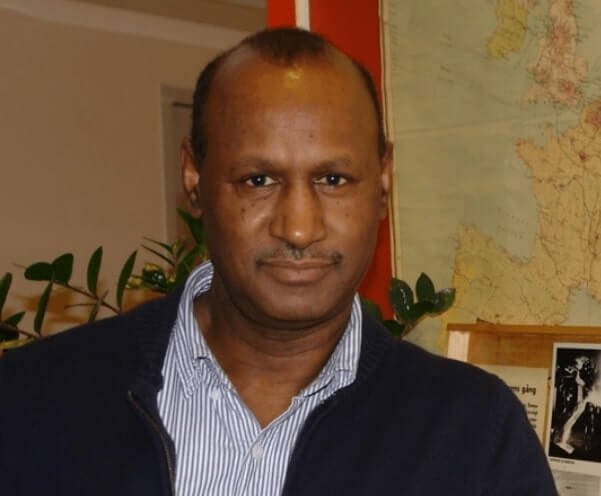
1.1 Unity….
On the one hand, former Nigerian President Obasanjo and on the other hand, US special envoy Jeffrey Feltman exerted their utmost effort to end the war in the North. In contrast, Obasanjo’s movement has gone farther than Feltman. Obasanjo has held talks with Abiy as well as Debretsion. He also held talks with the heads of state of Amhara, Oromo and Afar. He then submitted a report to the African Union and the United Nations. Finally and made a statement to reporters.
It was a perfect approach. According to the standards, very professional. Obasanjo is not a joke. The contribution he had on Nigeria’s democracy is significant . In addition, he has mastered the art of mediation. He is one of the gems of Africa. According to Obasanjo, in the process so far, both sides have expressed confidence that they will respect Ethiopia’s unity.
However, the TPLF has repeatedly stated that it is primarily fighting for Tigray’s independence. If independence is not possible, they say, they will only accept unity as a second option under the guise of a confederation. Even if the war ends with the federal government, other ethnic groups (especially the Oromos) will continue to accept the idea, so we need to understand what a confederation means as a nation. We need to be aware of both our support and our opposition. This article is intended for informational purposes only. But it will be the starting point.
1.2 Confederation by default
Various books and articles on the Confederation, on average, put it this way. A confederation is an association of sovereign groups or states. A confederation is a coalition of different sovereign bodies or governments. Note: A confederation is an association, not a union. For example, there is a trade union confederation in our country. This means that after the various unions were organized in their own way, they were merged into a nationwide confederation.
For the confederation to exist, there must be governments that have their own separate entities. As a nation, in order for a confederation to exist, its own separate states must exist. If there are governments, then there are countries. Therefore, if Ethiopia is to be a confederation, there must be different countries that are members of the confederation, which are given the status quo by the current constitution.
“Nation, nationalities and peoples” need to be elevated to the level of “sovereign states”. To do this, it is necessary to either amend the constitution, or draft a new constitution. The second goal of the transitional government is to prepare the country for this. As it is known, the first objective is to hold a referendum in Tigray and Oromia. This initiative itself requires an article. For the time being, let’s focus on confederation, and let me point out six points that distinguish confederation.
1.3 Federation and Confederation in comparison
The differences between the Federation and the Confederation are detailed in various books. For my part, I have summarized and summarized the various books in their own way in the English language in which they are written. Then, I will try to give a little explanation. In this way, I hope the differences become clearer.
1- In a federation the center is sovereign and its constituents are autonomous.
A confederation is a loose association of sovereign states.
The United States has both experiences. During the Confederation, the central American economy, under British rule, was transformed into a post-independence economy, as the central government did not have the right to enact trade laws. Also, the central government had no bureaucracy outside of the legislature. Courts are also prohibited. There was no national army. The TPLF’s vision of the Confederation creates such an Ethiopia. By the way, when the Americans realized that the Confederation would not stop them, they turned it into a federation at the speed of light. They did not stay long.
When they left the confederation and went to the federation, they left one corner where the central government was paralyzed, and not all the other corners were under the control of the central government. You have chosen to share the power of the answer to sovereignty. But the division is not equal. They gave the lion’s share to the central government. This is the secret to the success of federalism. There can be no successful federalism without a strong central government. What is its existence? The question, then, is whether, in physics, atoms are indivisible, accepting that sovereignty is not something that divides the central government and the regions. In the federation, sovereignty is monopolistic. In the Confederation, the monopoly regions are.
2- There is always the right to secession in a confederation.
A federation, on the other hand, is permanent and does not recognize the right to secede. Let’s take a brief look at this from the perspective of American experience. To free Americans from slavery, slavery was illegal in the northern states and legal in the southern states. After living in this state for 70 years, Abraham Lincoln was elected president. Outraged, the South declared its independence from the United States. America’s civil war is on the rise.
As many people think, the war was not just about liberating slaves. During the war, the Southerners issued a proclamation declaring slavery illegal, and they fought primarily for their right to secession. When they were told, “You cannot separate,” the war continued until they were defeated. In the US federal system, secession is announced as a bloodbath. This story is a great lesson for all countries that build a federal system. Although there are many federal states in the world, there are many federal states. To the west are Europe, Britain, Germany, Australia and Switzerland.
Although the Swiss constitution declares the country a confederation, it, like the United States, has demonstrated that secession cannot be achieved after a civil war, and has moved its system from confederation to federation. It has been called the “Confederation”. There is no country in the world with a confederation system. Only Bosnia is a paper-based constitutional federation, but in practice it is a non-centralized confederation. Among the federal states, the right to secession is not legally recognized in any of Ethiopia.
In Britain, the Prime Minister has been given the power to decide whether or not a decision has been made by the people in the region. In this context, a referendum was held on the secession of Scotland during the tenure of Prime Minister David Cameron. The same question was raised by current President Boris Johnson, who was not allowed to hold a referendum. In Britain, secession is a privilege; Not right. By the way, Britain is the only country in the world that combines monotheism and federalism. It does not have a written constitution. The story is complex. But this is another topic. He is not on the list.
Let me get to the key point. In Confederation, secession does not require a people’s decision. All that a member of the Confederation needs to do is announce his or her resignation. that’s it! No other problem. A country does not stand still. TPLF did not call it “confederation” for no reason.
3- In a federation citizenship is national.
ln a confederation citizenship is conferred by the regional state. In the Federation, citizenship is national. All citizens have equal rights in all parts of the country. Confederation citizenship is primarily regional. A citizen of one state may or may not have the same rights in another state.
4- Federation is a summation of individuals. Confederation is a summation of states.
Federation is the sum of individuals. Citizens and the central government are in direct contact. That is why citizenship is a state. Confederation, however, is the sum of the states. Citizens can only communicate directly with their regional government. The members of the Confederation are states, not citizens. As a result, the confederation does not have direct citizens. Even if he is a citizen, indirectly, not directly.
5- Historically confederations have been short-lived. But federations have demonstrated endurance.
Historically, confederation doesn’t last long. The end is always a breakdown. In its modern form, the first confederation was the German Confederation, which lasted for 60 years (1806-1866). Unsurprisingly, Bismarck, the father of German unity, was replaced by a strong unitary state. Germany was born as a nation in the ruins of the Confederation. The longest-serving is the Swedish-Norwegian Confederation, which lived for 91 years (1814-1905). But even so, they did not escape destruction. If confederation were to be a reality, we would find Sweden and Norway, which share almost one language, religion, history, psychology and similar standard of living, to this day.
Outside of Europe, the Confederation of Central America in the Panama area of Panama lasted for three years (1836 – 1839) for three years (1836 – 1839) in Latin America, Peru and Bolivia. There is only one Confederation in Africa. That was Senegal and the Gambia which rolled for only three years (1982-89). Confederations in Europe, modern-day Serbia, and Montenegro lasted only three years (2003-06). As we move from the 19th century to the twentieth and twenty-first centuries, the age of confederation is getting shorter. This is not something to be taken lightly.
On the contrary, as far as I know, Federation is an antidote to a breakup. Although Switzerland is ahead of the curve, the United States is the first modern state in the world. United States is the model for the rest of the world. It has been 230 years since it became a federal state. The concept and experience of federalism has made it possible for national and democratic nations to exist. This is the best way for Ethiopia. Confederation can never be an option for a federation unless the world is divided.




















